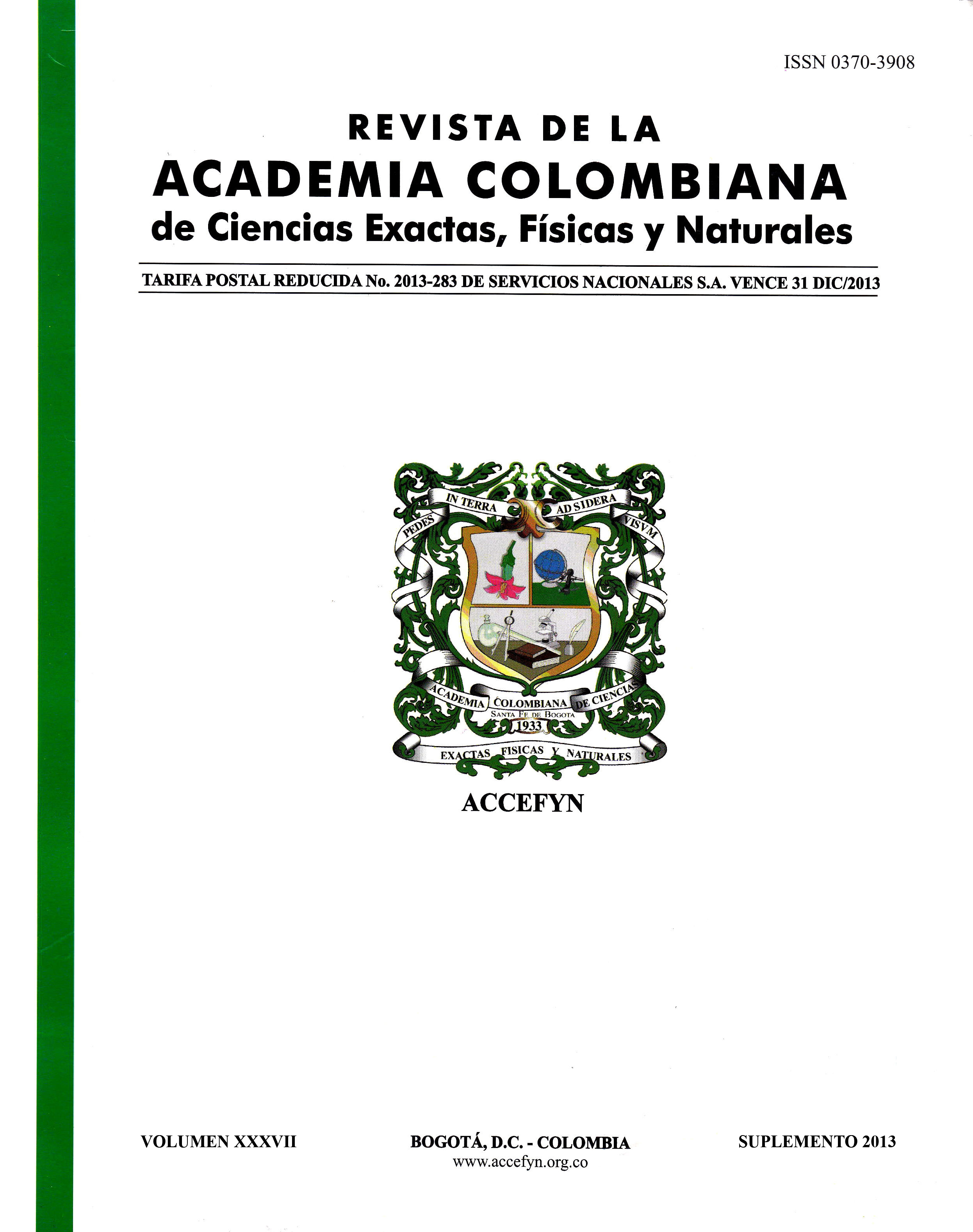Resumen
El análisis de la materia mineral contribuye significativamente a definir la calidad del carbón. El propósito del artículo es presentar resultados de identificación y cuantificación, de las fases minerales presentes en el carbón y fracciones de carbón obtenidas por diferentes métodos de separación, usando Analisis Rietveld de patrones de difracción de rayos X, espectroscopia Miissbauer de transmisión 57Fe y inicroscopia electrónica de barrido con análisis de energía dispersive de rayos X. Además, fue identificado el potencial de remoción de minerales, y fue explorada las relaciones entre la ceniza obtenida, el valor calorífico y las proporciones relativas de los minerales individuales en las muestras estudiadas. Usando la información obtenida, se evalúan los impactos tecnológicos, ambientales y económicos asociados con la materia mineral.
Referencias
ACAA, 2013. www.acaa-usa.org.
Alpern, B., Lemos de Sousa, M. J., 2002. Documented international enquiry on solid sedimentary fossil fuels; coal: definitions, classifications, reserves resources, and energy potential. Int. J. Coal Geol., 50, 3 - 41.
ASTM, 2007 ASTM D1506-99. Standard Test Methods for Carbon Black Ash Content.
Clemens, A. H., Deely, J. M., Gong D., Moore T. A., Shearer J. C., 2000. Partitioning behaviour of some toxic trace elements during coat combustion the influence of events occurring during the deposition stage. Fue1 79, 178 I — 1784.
Finkelman, R. B., 1995. The Need for Enhanced Coal Quality Databases. Eight International Conference on Coa1 Science, Volume I, Oviedo, Spain. Elsevier Science, 75— 78.
Finkelman, R. B., Gross, P. M. K., 1999. The Types of Data Needed for Assessing the Environmental and Human Health Impacts of Coal. Int. J. Coal Geol., 40, 91-101.
Finkelman, R. B., Pierce, B. S., 2002. Coa1 Quality: Global Priorities. Proc. 27th International Technical Conference on Coal Utilization & Fuel Systems, Clearwater, Florida, USA, Coal Technology Association, Gaithersburg, Volume II, 667-668.
Gracia, M., Marco J. F., Gancedo J. R., 1999. Uses and perspectives of Mössbauer spectroscopic studies of iron minerals in coal. Hyperf. Int., 122, 97-114.
Mandile, A. J., Hutton A. C., 1995. Quantitative X-ray diffraction analysis of mineral and organic phases in organic-rich rocks. Int. J. Coal Geol., 28, 51-69.
Reyes Caballero, F., Pérez Alcázar G. A., Barraza, J. M., Bohórquez, A., Tabares, J. A., 2003. Quantification of Pyritic Sulfur of the Colombian Coal by Mössbauer spectroscopy. Hyperf. Int., 148/149, 31- 38.
Reyes Caballero, F., 2005. Tesis Doctoral. Universidad del Valle, Cali- Colombia.
Reyes Caballero, F., Martinez Ovalle S. A., 2013. Mossbauer study of the inorganic sulfur removal from coals. Hyperf. Int., DOI 10.1007/ s10751-013-0874-x.
Stevens, J. D., Khasanov, A. M., Miller, ã. W., Pollak, H., Li, Z., 1998. Mossbauer Mineral Handbook. Baltimore Press, North Carolina, USA.
Tascón, J. M. D., Vassilev, S. V., 2000. La materia mineral del carbón: mé- todos de caracterización. Memorias V Congreso Nacional de Ciencia y Tecnología del carbón, Valledupar, Colombia, 19 — 23.
Vassilev, S. Y., Eskenazy, G. M., Vassileva, C. G., 2001. Behaviour of elements and minerals during preparation and combustion of the Pernik coal, Bulgaria. Fuel Proc. Tech., 72, 103 — 129.
Ward, C. R., 2002. Analysis and significance of mineral matter in coal seams. Int. J. CoaI Geol., 50, 135-168.
WCA, 2013. www.worldcoal.org.

Esta obra está bajo una licencia internacional Creative Commons Atribución-NoComercial-SinDerivadas 4.0.

